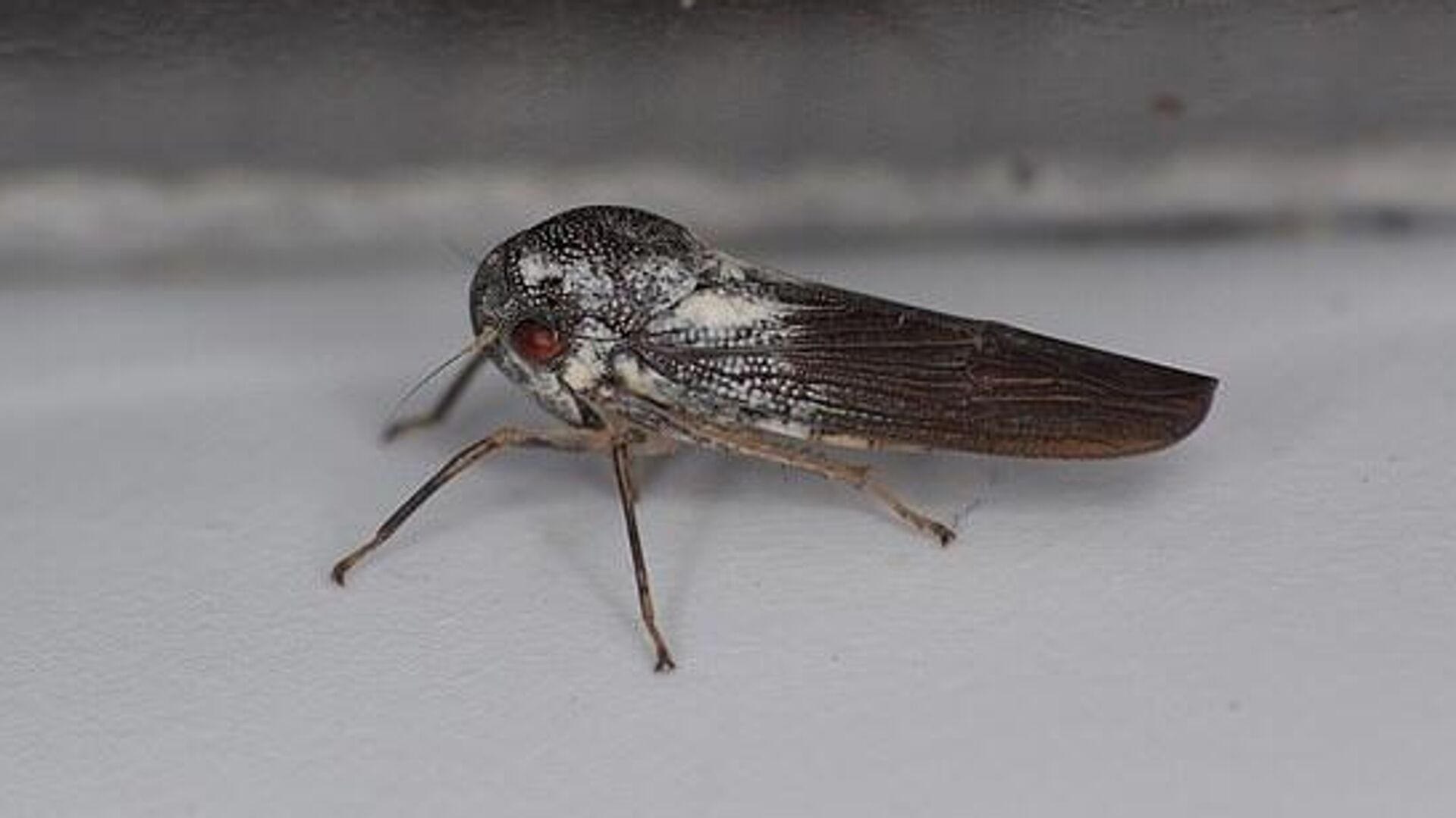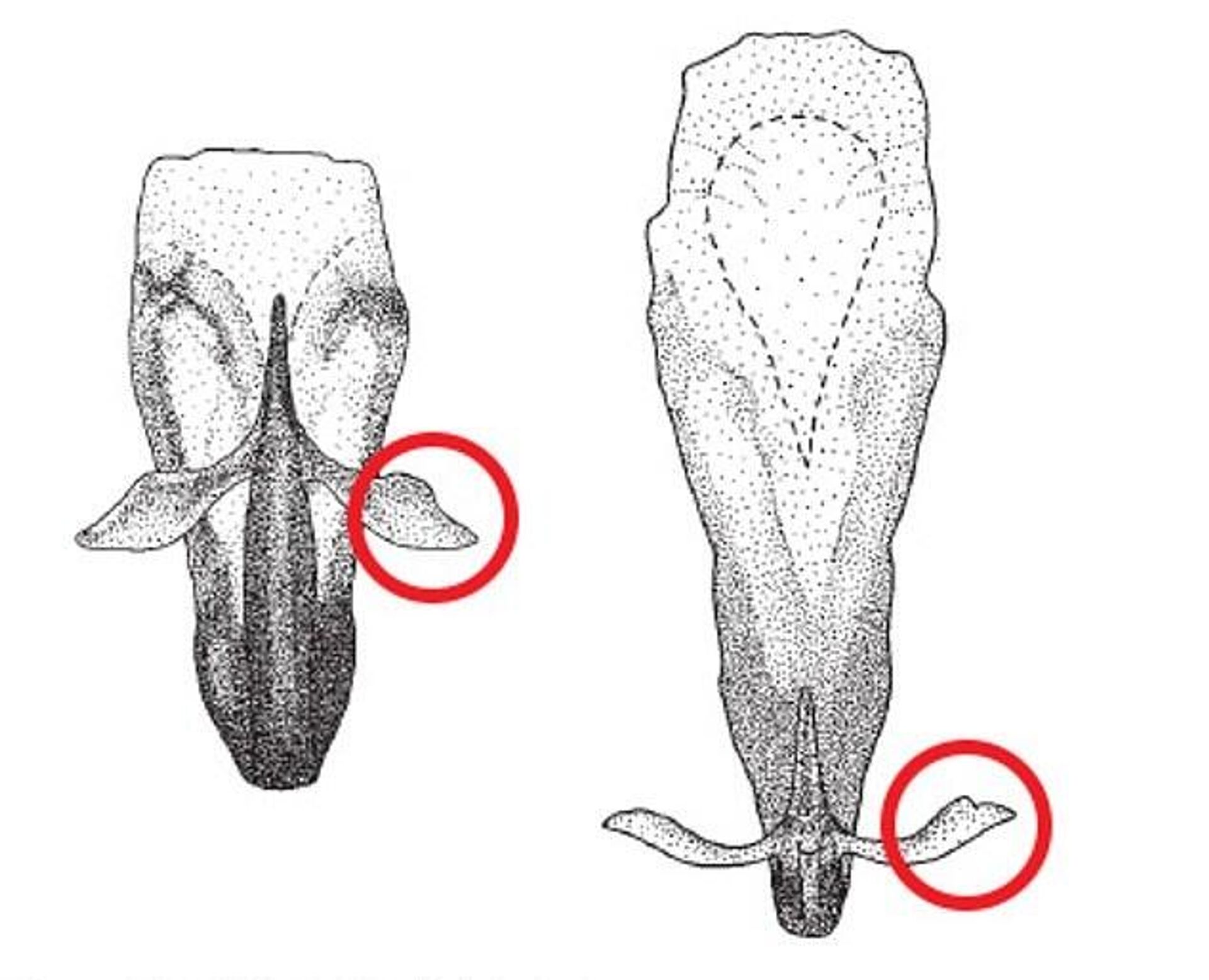https://sputnikglobe.com/20220128/new-incredibly-rare-species-of-leafhopper-with-leaf-shaped-genitals-discovered-in-uganda-1092570847.html
New 'Incredibly Rare' Species of Leafhopper With Leaf-Shaped Genitals Discovered in Uganda
New 'Incredibly Rare' Species of Leafhopper With Leaf-Shaped Genitals Discovered in Uganda
Sputnik International
The new species of leafhopper belongs to the Phlogis genus, whose closest relative was last seen in 1969, in the Central African Republic. 28.01.2022, Sputnik International
2022-01-28T07:39+0000
2022-01-28T07:39+0000
2022-11-23T11:38+0000
discovery
grasshopper
rare species
asia
africa
discovery
endangered species
species
new
new species
https://cdn1.img.sputnikglobe.com/img/07e6/01/1c/1092572346_51:91:597:398_1920x0_80_0_0_be32974372b09cf32bd747a321cfa8db.jpg
A rare species of leafhopper insect with "leaf-shaped genitals" has been discovered by a British scientist in Uganda, a nation in East Africa.Dr. Alvin Helden of UK's Anglia Ruskin University made this discovery while doing field work in a rainforest in Kibale National Park in western Uganda.Calling it an “incredibly rare insect”, Dr. Helden was awed by the leafhopper's distinctive metallic sheen, red eyes, black head and pitted body surface.Dr. Helden named the new species 'Phlogis kibalensis' and the findings were published in Zootaxa journal, in which he revealed that leafhoppers – a family of sap sucking bugs that are closely related to cicadas – are much smaller, just 0.2 inches (6.5 mm) long.Like most leafhoppers, the species features leaf-shaped male genitals.Leafhoppers feed mainly on plant sap, sucked directly from the phloem, and are preyed on by invertebrates, including spiders, beetles, and parasitic wasps, as well as birds.Dr. Helden, who has been leading student field trips to Kibale National Park since 2015, says, "There is so much still to find out, not just about this species but so many others, including the many species that are still waiting to be discovered."
africa
east africa
Sputnik International
feedback@sputniknews.com
+74956456601
MIA „Rossiya Segodnya“
2022
Sangeeta Yadav
https://cdn1.img.sputnikglobe.com/img/07e4/08/1b/1080292803_0:121:960:1081_100x100_80_0_0_7490b319dab9611e309056b177265184.jpg
Sangeeta Yadav
https://cdn1.img.sputnikglobe.com/img/07e4/08/1b/1080292803_0:121:960:1081_100x100_80_0_0_7490b319dab9611e309056b177265184.jpg
News
en_EN
Sputnik International
feedback@sputniknews.com
+74956456601
MIA „Rossiya Segodnya“
Sputnik International
feedback@sputniknews.com
+74956456601
MIA „Rossiya Segodnya“
Sangeeta Yadav
https://cdn1.img.sputnikglobe.com/img/07e4/08/1b/1080292803_0:121:960:1081_100x100_80_0_0_7490b319dab9611e309056b177265184.jpg
discovery, grasshopper, rare species, discovery, endangered species, species, new, new species, grasshopper, new discoveries, east africa
discovery, grasshopper, rare species, discovery, endangered species, species, new, new species, grasshopper, new discoveries, east africa
New 'Incredibly Rare' Species of Leafhopper With Leaf-Shaped Genitals Discovered in Uganda
07:39 GMT 28.01.2022 (Updated: 11:38 GMT 23.11.2022) The new species of leafhopper belongs to the Phlogis genus, whose closest relative was last seen in 1969, in the Central African Republic.
A
rare species of leafhopper insect with "leaf-shaped genitals" has been discovered by a British scientist in Uganda, a nation in East Africa.
Dr. Alvin Helden of UK's Anglia Ruskin University made this discovery while doing field work in a rainforest in Kibale National Park in western Uganda.
Calling it an “incredibly rare insect”, Dr. Helden was awed by the leafhopper's distinctive metallic sheen, red eyes, black head and pitted body surface.
Dr. Helden named the new species 'Phlogis kibalensis' and the findings were published in
Zootaxa journal, in which he revealed that leafhoppers – a family of sap sucking bugs that are closely related to cicadas – are much smaller, just 0.2 inches (6.5 mm) long.
Like most leafhoppers, the species features leaf-shaped male genitals.
"Leafhoppers of this (Phlogis) genus are so incredibly rare that their biology remains almost completely unknown, and we know almost nothing about Phlogis kibalensis, the new species I found, including what plants it feeds on or its role in the local ecosystem (sic)," Dr. Helden said in the journal.
Leafhoppers feed mainly on plant sap, sucked directly from the phloem, and are preyed on by invertebrates, including spiders, beetles, and parasitic wasps, as well as birds.
Dr. Helden, who has been leading student field trips to Kibale National Park since 2015, says, "There is so much still to find out, not just about this species but so many others, including the many species that are still waiting to be discovered."




